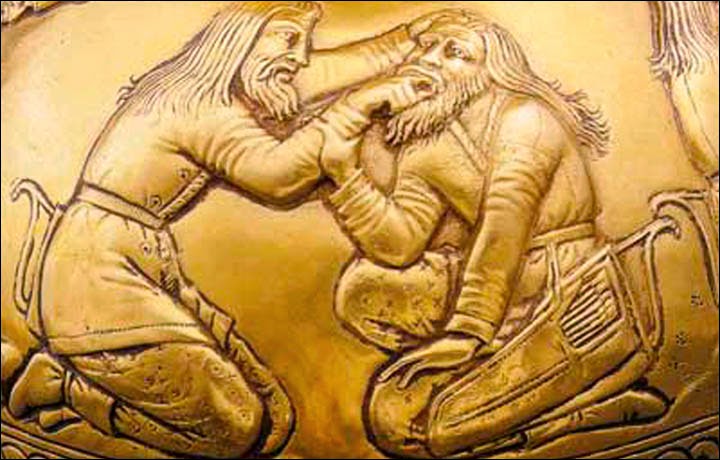 |
| I look like the right-hand Scythian (4th century BC, from Crimea) |
An
arduous week at work was made worse by a nasty bout of toothache. This will be a short blog, written while waiting
for the penicillin to kick in and stop whatever revolting things are happening
in my upper left jaw. (Those who would enjoy a longer text, about love and
transcendent beauty rather than decomposing molars, are invited to stop reading now and
instead click
on my article about translations of Sappho in this month’s New York Review of Books).
 |
| Martinez de Castrillo's Brief Colloquy |
I
have been mumbling some prayers from the right-hand side of my mouth to
Apollonia, patron saint of dentistry, to ask for a speedy recovery. Here is one
short enough to utter while suffering only two twinges. It appears in a book by
a Spanish doctor called Francisco Martínez de Castrillo, first published in
1557:
Illustrious
virgin martyr, Apollonia,
Pray
to the Lord for us
Lest
for our offences and sins we be punished
By
diseases of the teeth.
 |
| The Passion of Poor Apollonia |
Short
but to the point. Apollonia wasn’t herself a dentist, but an elderly spinster
who lived in Alexandria. She was also a Christian, apprehended by a mob during
the persecutions which took place during the reign of the Roman Emperor Decius
(who was actually from Serbia) in 249 AD.
Poor
Apollonia was tortured by having her teeth forcibly knocked out before she was
burned to death. We know this from a letter from (1) an Alexandrian bishop to (2)
a Syrian bishop quoted by (3) the Palestinian/Caesarean bishop Eusebius in his Ecclesiastical History 6.41.
 Despite
her violent demise, parts of St. Apollonia’s skull, jaws and teeth managed to
escape from Egypt and are to be found in several ancient churches in Rome,
Naples, Volterra, Bologna, Brussels, Antwerp, Cologne and even French-speaking
Canada. If any of you are anywhere near one her relics, please put in a word
for me.
Despite
her violent demise, parts of St. Apollonia’s skull, jaws and teeth managed to
escape from Egypt and are to be found in several ancient churches in Rome,
Naples, Volterra, Bologna, Brussels, Antwerp, Cologne and even French-speaking
Canada. If any of you are anywhere near one her relics, please put in a word
for me.


















.jpg)